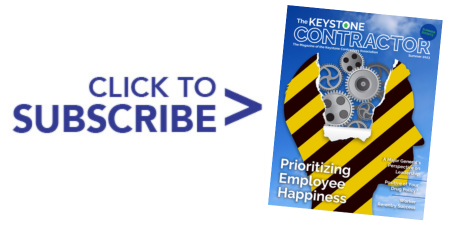It’s not an exaggeration to say that construction workers put their lives on the line every day. The industry has devoted a great deal of effort to curtailing the so-called “Fatal Four” hazards – falls, strikes by objects, electrocution, and getting caught in or between dangerous places or things. But poor mental health – a far less visible hazard – also rears its ugly head on the industry. Some of the stress, anxiety, and depression among construction workers can arise due to the temporary nature of construction work often results in financial uncertainty. The job can also be draining for workers who are separated from their families for extended periods. And long work hours and subsequent fatigue certainly don’t help.
According to the Centers for Disease Control, construction has the highest suicide rate of all industries, at 53.2 suicides per 100,000 workers – roughly four times greater than the national average and five times higher than all other construction fatalities combined. CDC data from 2012 and 2015 indicate suicide rates were highest among males in the construction and extraction occupational group.
Technically, because many suicides aren’t workplace events, many employers do not view it an industry problem or an occupational hazard worth of inclusion in a formal safety program. It doesn’t help that, according to the National Institutes of Health, men underreport mental health issues and are less likely to receive the treatment they need. In construction, toughness and strength are paramount, so mental health conditions, or seeking help to deal with them, could come across as personal weakness. A 2021 survey from the American Psychiatric Association’s (APA) Center for Workplace Mental Health revealed 37% of respondents believe construction workers feel comfortable openly discussing mental health with supervisors. Only 17% thought workers would actually discuss those issues with a supervisor, and only 18% believe employees feel comfortable openly discussing mental health with co-workers.
Kevin Trout, a leadership coach with Vistage Worldwide, says some employers in the industry might want to broach the topic but are worried about expressing concern without compromising employee privacy. He feels, however, that companies have nothing to lose by approaching employees authentically and nonjudgmentally.
“Just ask ‘is everything okay’ and then shut up and listen,” he says.
Another way Trout says supervisors can be authentic is to share a personal story. He believes, for example, that the coronavirus pandemic took a pretty deep toll on everyone, and that presents an opportunity for nonjudgmental connection.
The National Alliance on Mental Illness has a laundry list of warning signs employers can observe to preempt a crisis and help a silently struggling person get help:
- Excessive worrying or fear
- Feeling excessively sad or low
- Confused thinking or problems concentrating and learning
- Prolonged feelings of irritability or anger
- Avoiding friends and social activities
- Difficulties understanding or relating to other people
- Changes in sleeping or eating habits
- Extreme mood changes
- Difficulty perceiving reality
- Inability to perceive changes in one’s own feelings, behavior, or personality
- Multiple physical ailments without obvious causes
Beyond looking for symptoms, employers can also take a proactive approach that the APA says entails a “sustained commitment of engaging workers by distributing resources, tools, and programs through multiple channels.” Approaching mental health engagement this way, as opposed to a “once-and-done” method, can help workers feel psychologically safe and more willing to pursue help. Some avenues for mental health engagement include employee assistance programs, toolbox talks, fact sheets, newsletters, dedicated training for employees and supervisors, wallet cards, and hard-hat stickers.
The APA report notes, though, that employers have a long way to go to make employees fully aware of their options. More than three-fifths of respondents said they offer an Employee Assistance Program, but just 48% identified an EAP as a useful resource for employees. Among HR and benefits professionals who responded, 79% reported they make an EAP available, but only 52% said it is helpful to share an EAP with employees.
However, contractors don’t simply have to rely on their own EAPs. Thanks to the work of many industry alliances, there are also a plethora of publicly available resources. For example, the team behind Construction Safety Week has published a free, downloadable mental wellness field guide (https://rb.gy/rtptq) with resources to support workers. And the National Alliance for Suicide Prevention has a checklist of workplace conditions (https://rb.gy/9n79d) that employers can reference to see how prepared they are.






